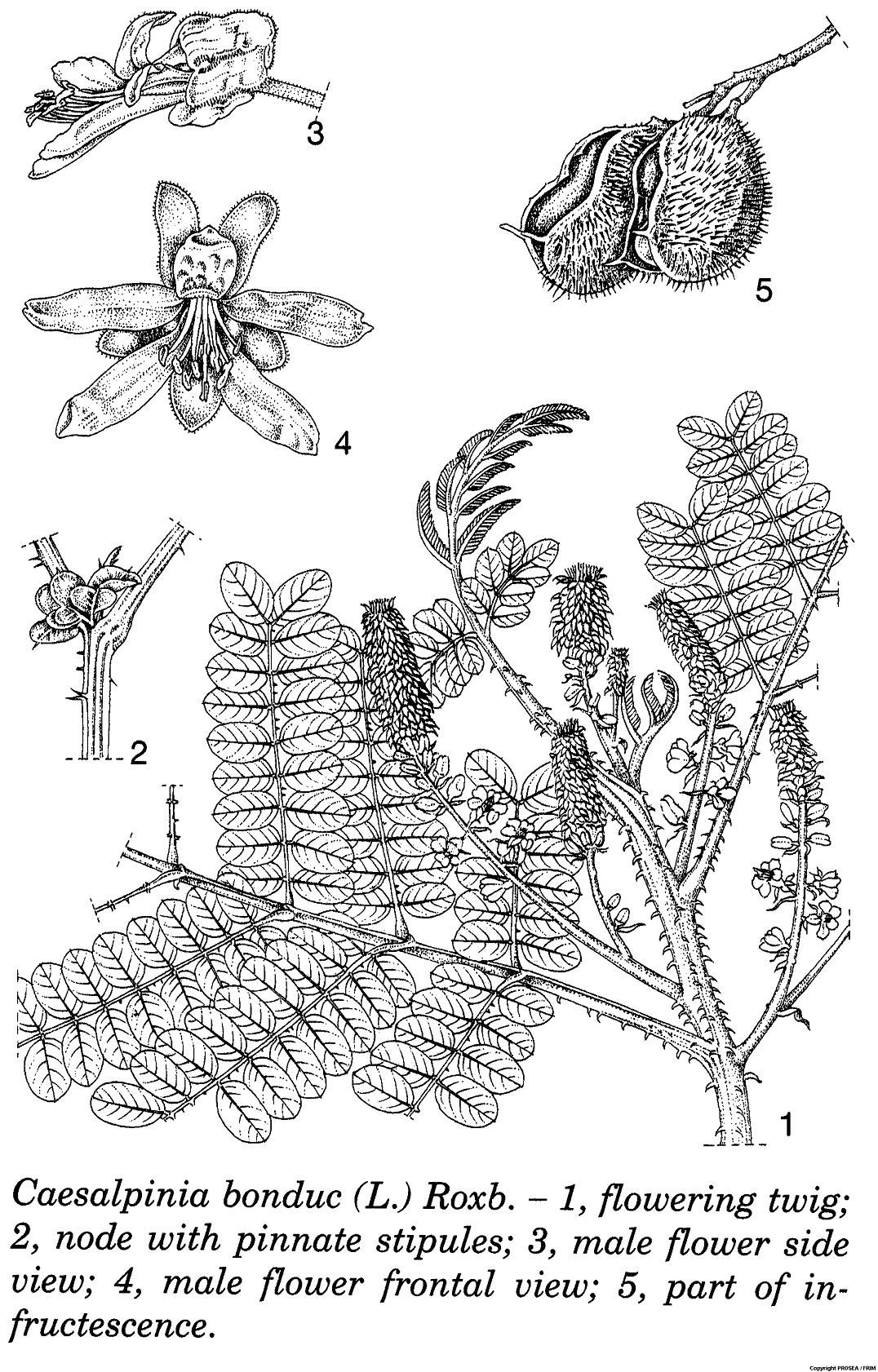Caesalpinia bonduc (L.) Roxb.
Family
Leguminosae
Synonyms
Guilandina bonduc L., Caesalpinia bonducella (L.) Fleming.
Vernacular Names
|
English |
Bonduc nut, fever nut. |
|
Indonesia |
Kemrunggi (Javanese), areuy mata hiyang (Sundanese), kate-kate (Ternate). |
|
Thailand |
Waat (Peninsular). |
|
Philippines |
Kalumbibit (Tagalog), sabinit (Bikol), singor (Iloko). |
|
Vietnam |
M[os]c m[ef]o, vu[oos]t h[uf]m. |
|
Papua New Guinea |
Kurere (Garara, Oro Province). |
Geographical Distributions
Caesalpinia bonduc is a pantropical species. It is found throughout Malaysia, although it is noticeably scarce in the rainforest of Sumatra, Borneo, the Philippines and western New Guinea.
Description
Caesalpinia bonduc is a liana which can reach up to 15 m long. Its branchlets are usually armed.
The leaves are paripinnate, with 15-80 cm long rachis, 6-11 pairs of pinnae and 8-20 cm long pinna. The stipules are pinnately or 3-5-lobed, up to 20 mm long and sub-persistent. The leaflets are opposite to subopposite, in 6-9(-12) pairs per pinna, rounded at base and rounded to acute at apex. The raceme or panicle is supra-axillary or terminal and 30-60 cm long.
The flowers are unisexual, with sepals measure 7-10 mm x 2-3 mm. The clawed petals measure 7-10 mm x 2-3 mm while the ovary is with 2 ovules.
The pod measures 6.5-9 cm x 3.5-4.5 cm and is covered with long hairy spines. It is 1-2 seeded and dehiscent. The seed is ovoid, smooth and grey.
Ecology / Cultivation
Caesalpinia bonduc can be found in a variety of coastal habitats, especially in disturbed sites, but also occurs inland chiefly in secondary forests up to 800 m altitude. C. bonduc and C. major are often confused or misidentified.
Line Drawing / Photograph
References
1. Plant Resources of South-East Asia No.12(2): Medicinal and poisonous plants 2.



